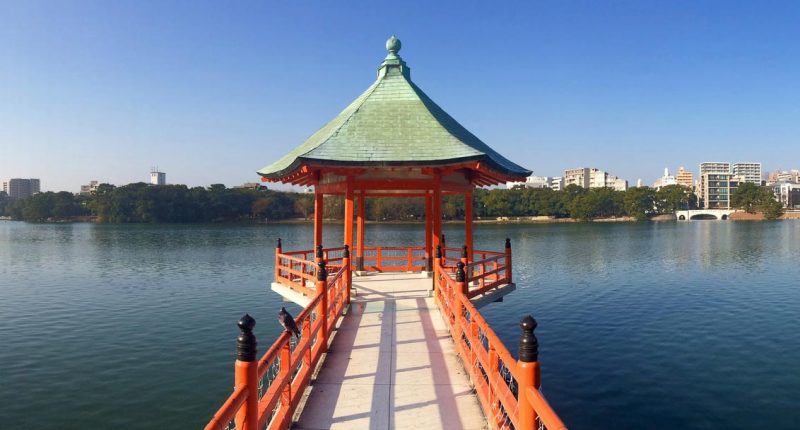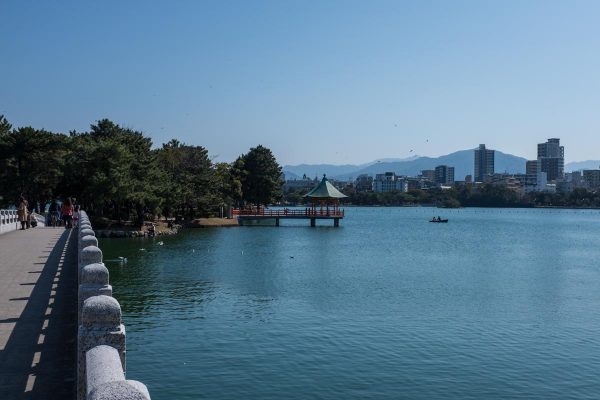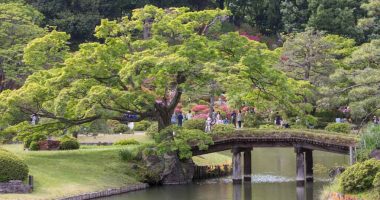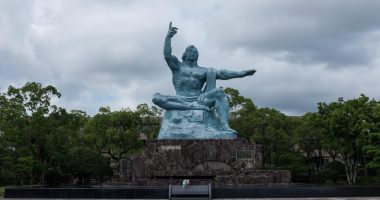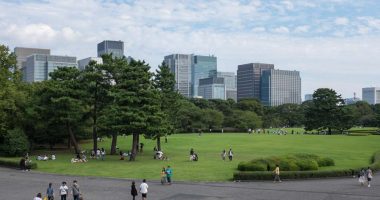Ohori Park (大濠公園, Ōhori-kōen) is a park is the center of Fukuoka with a beautiful large pond. Ohori (大濠) means “large moat” in Japanese, and the park gets its name because the area once formed part of the moat network for the nearby Fukuoka Castle (only the remains of the castle stand today). In the 1920s the park was re-built based on proposals from a group of people including Honda Seiroku who also designed Hibiya Park in Tokyo, and opened to the public in 1929. The design saw three islands joined by four stone bridges constructed in the middle of the pond and a 2 kilometer path around the water which is popular with joggers. The red Ukimi Pavilion on the northern Willow Island was moved to the park in 1949. From March to early November visitors can rent small dinghies and swan-shaped paddle boats.
The park is a Registered Monument of Japan in Japan and three of the bridges Registered Cultural Properties of Fukuoka City. The Fukuoka Art Museum is located to the southeast corner of the lake. Nearby you will also find Ohori Park Japanese Garden which contains small hills, groves of trees, and a sukiya-zukuri style teahouse. It was opened to the public in 1984. There is a small entrance charge (240 yen for adults and 120 yen for children).
